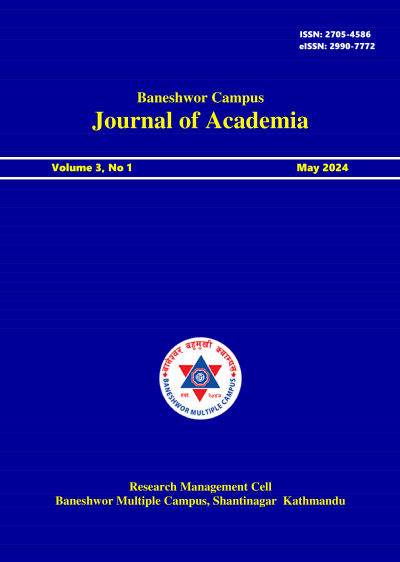Persistent and implications of Changing Livelihood in Hill Setting of Nepal: A Qualitative Inquiry of Vyas-10 of Tanahun
DOI:
https://doi.org/10.3126/bcja.v3i1.65494Keywords:
change, livelihood, migration, persistence, remittance, structureAbstract
Nepal has witnessed rapid change in political and socioeconomic dimensions in the last three decades. Migration and remittance are key factors for the changing livelihoods and it implies various forms of Hill settings in Nepal. The aim of the study is to identify the persistence and implications of livelihood changes in the Hill setting of Nepal from the emic perspective. As per the requirement of the study, 30 in-depth interviews were conducted Dumsi village of Vyas-10 of Tanahun district. The study identified that remittance is the key driver of the livelihood change in the Hill setting. The changing livelihood of the village people also changes the gender roles, the age structure of the working age population, change in the caste-based occupation and structural change of the caste-based system and the diversification of the income sources. Agriculture was seen as the main occupation three decades ago, it is a secondary source of livelihood in the villages due to migration and remittances.
Downloads
Downloads
Published
How to Cite
Issue
Section
License
Copyright (c) 2024 The Author(s)

This work is licensed under a Creative Commons Attribution-NonCommercial 4.0 International License.
CC BY-NC: This license allows reusers to distribute, remix, adapt, and build upon the material in any medium or format for non-commercial purposes only, and only so long as attribution is given to the creator.





